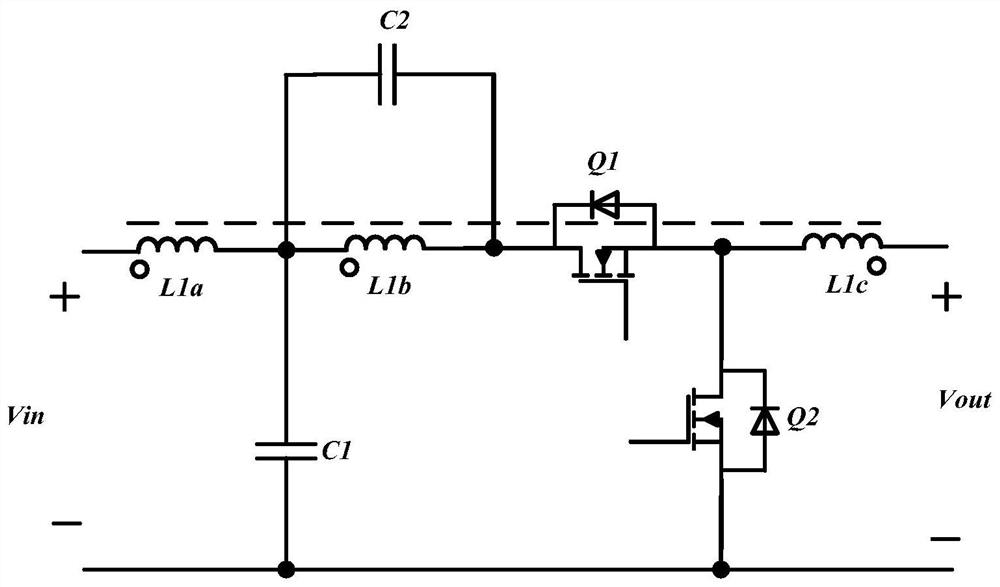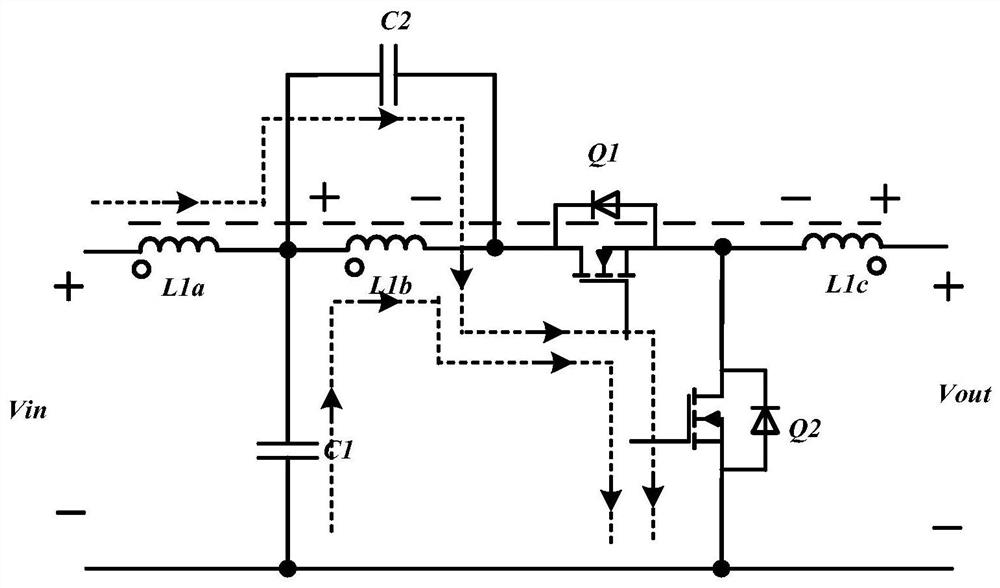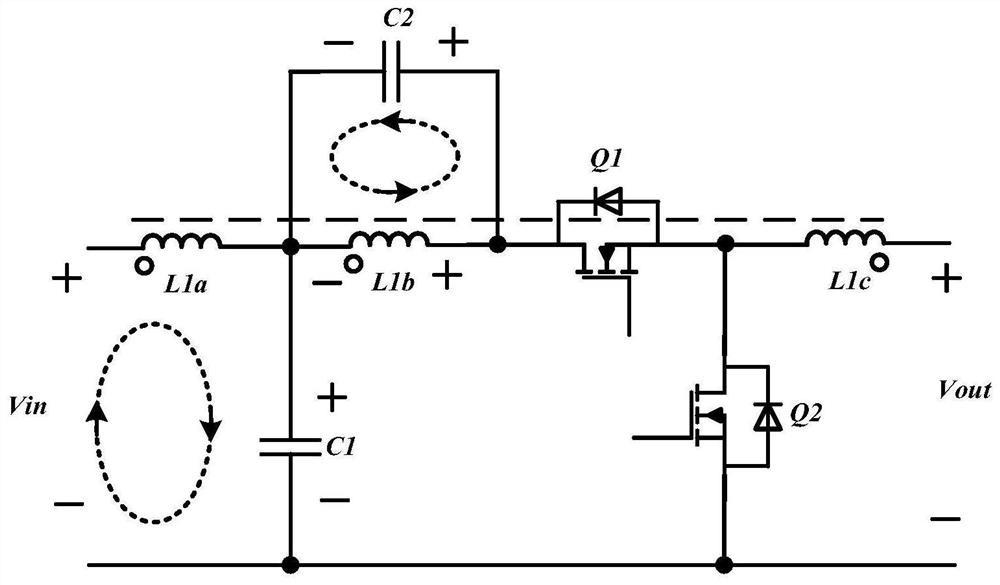Coupled quasi-Z-source direct-current converter
A DC converter, coupled technology, applied in the direction of conversion equipment without intermediate conversion to AC, output power conversion devices, electrical components, etc., can solve the problem of increasing power electronic device losses, low reliability of clamping diodes, power electronics The increase of devices and other problems can improve system efficiency and power density, reduce design, and avoid voltage mutation.
- Summary
- Abstract
- Description
- Claims
- Application Information
AI Technical Summary
Problems solved by technology
Method used
Image
Examples
Embodiment Construction
[0018] The technical solutions of the present invention will be further described below in conjunction with the accompanying drawings and embodiments.
[0019] Such as figure 1 As shown, the coupled quasi-Z source DC converter of the present invention includes two independent DC capacitors, a DC half-bridge consisting of two switching tubes, and a three-winding coupling inductor.
[0020] It specifically includes a first DC capacitor C1, a second DC capacitor C2, an upper switching transistor Q1, a lower switching transistor Q2, a first winding L1a, a second winding L1b, and a third winding L1c. Among them, L1a, L1b, and L1c form a three-winding coupled inductor. The input voltage of the coupled quasi-Z source DC converter is Vin, and the output voltage is Vout.
[0021] The end of the same name of the first winding L1a of the three-winding coupled inductor is connected to the positive pole of the input side of the quasi-Z source DC converter, the other end of the first wind...
PUM
 Login to View More
Login to View More Abstract
Description
Claims
Application Information
 Login to View More
Login to View More - R&D
- Intellectual Property
- Life Sciences
- Materials
- Tech Scout
- Unparalleled Data Quality
- Higher Quality Content
- 60% Fewer Hallucinations
Browse by: Latest US Patents, China's latest patents, Technical Efficacy Thesaurus, Application Domain, Technology Topic, Popular Technical Reports.
© 2025 PatSnap. All rights reserved.Legal|Privacy policy|Modern Slavery Act Transparency Statement|Sitemap|About US| Contact US: help@patsnap.com



